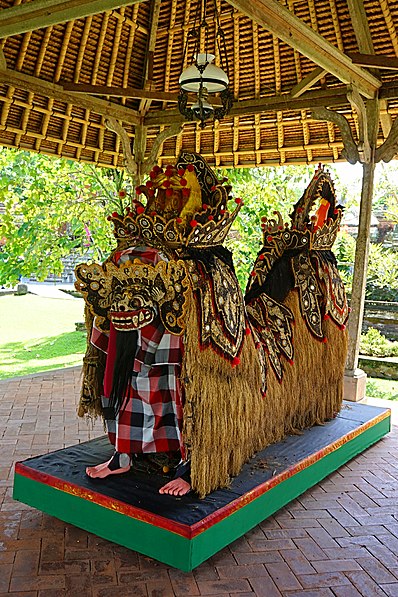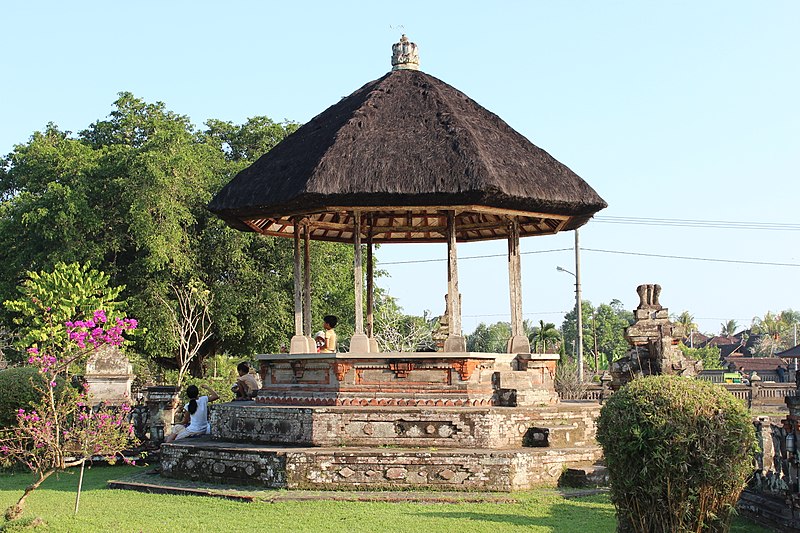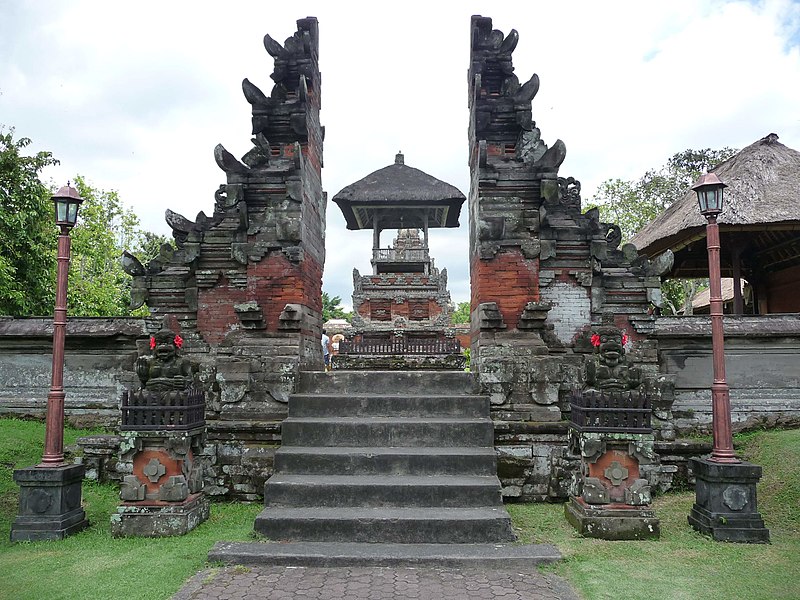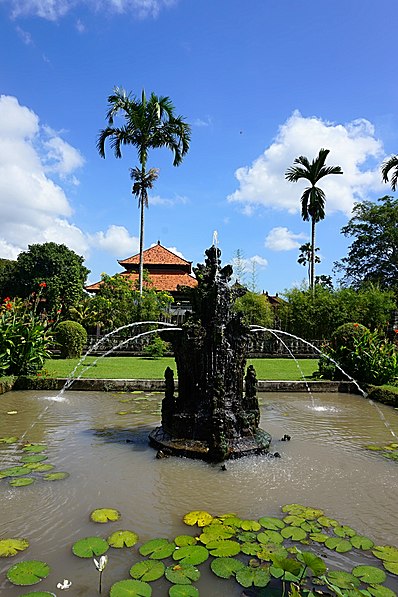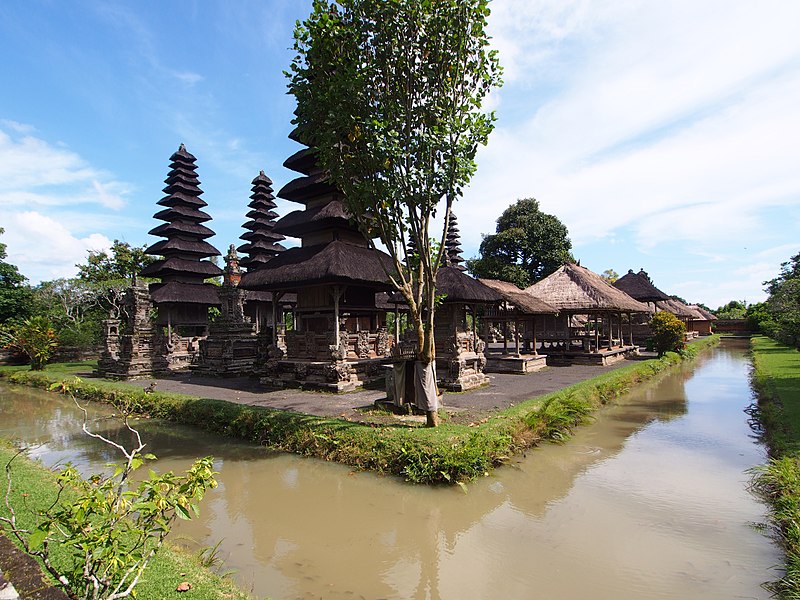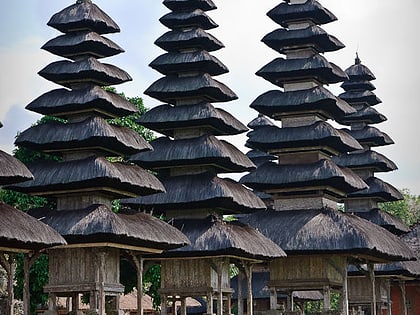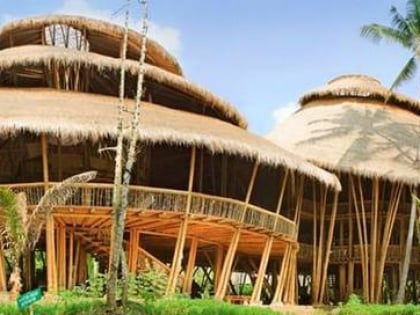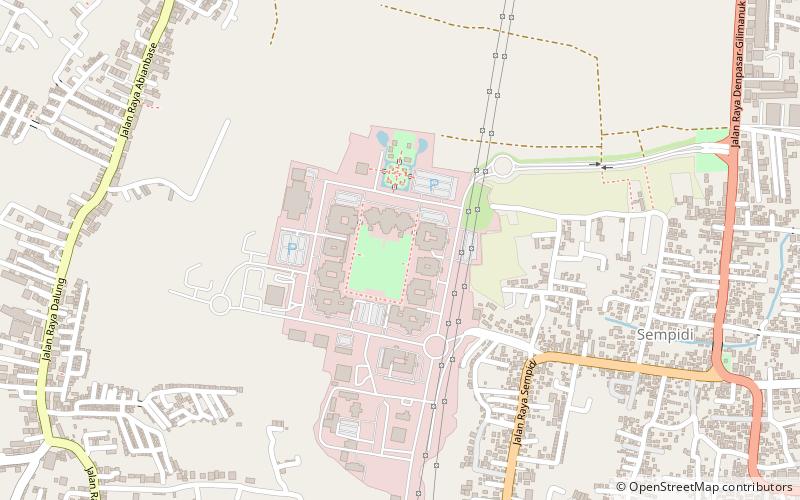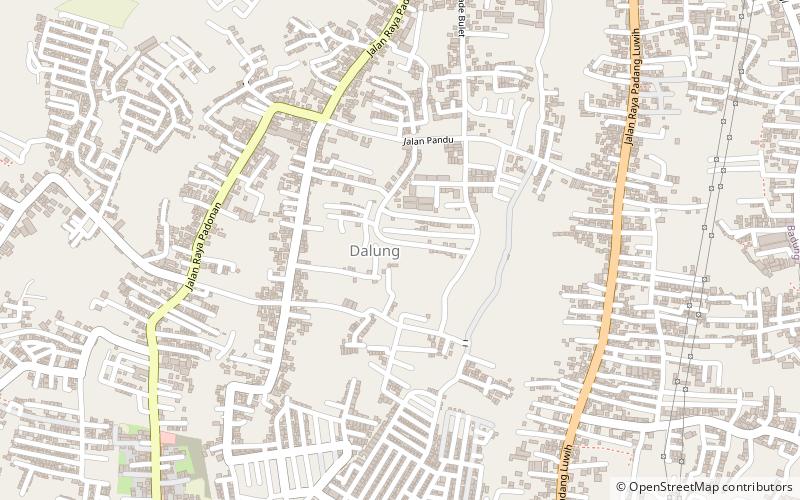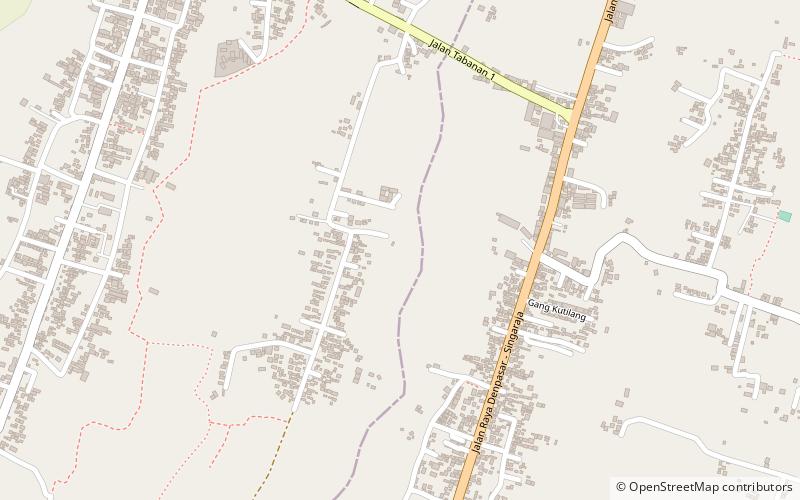Pura Taman Ayun, Tabanan
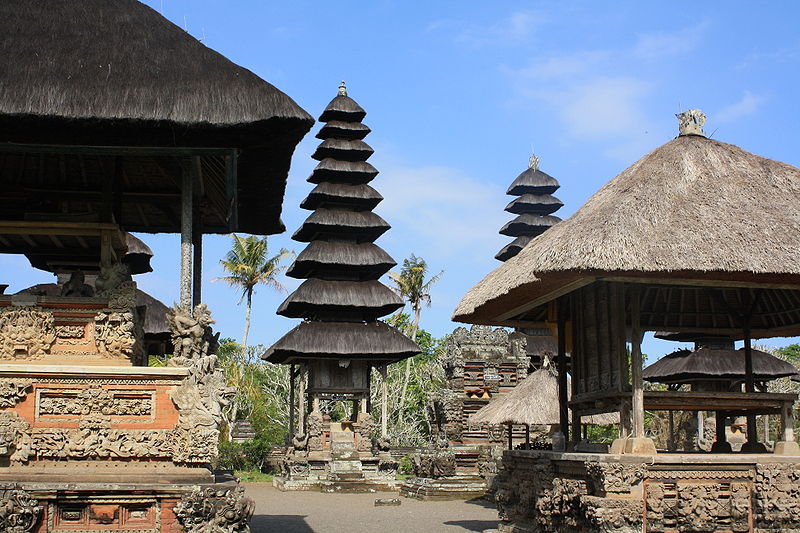
Facts and practical information
Nestled in the serene district of Tabanan, Indonesia, Pura Taman Ayun stands as a majestic testament to the island's rich Hindu heritage. This enchanting temple complex, located in the village of Mengwi, is a splendorous example of traditional Balinese architecture and landscape design. Built circa 1634 by the then ruler of Mengwi, I Gusti Agung Putu, Pura Taman Ayun was conceived as a royal family temple, a place of worship and a unifying symbol of the kingdom's prosperity and power.
The name 'Taman Ayun' translates to 'beautiful garden', and a visit to the site reveals why. The complex is surrounded by a wide moat that gives the impression of a sanctuary floating on water. This moat is not only a defensive feature but also a spiritual barrier, separating the sacred grounds from the outside world. The meticulously maintained gardens within the complex are adorned with lush greenery, lotus blooms, and artful statues, creating an atmosphere of tranquility and reverence.
Pura Taman Ayun is structured with multiple courtyards, each ascending to a higher and more sacred level. The outer courtyard, known as 'Jaba', serves as a welcoming area for visitors. Moving inward, one encounters several pavilions and a large open space used for religious gatherings and festivals. The inner courtyard, 'Jeroan', is the holiest area, accessible only during specific religious ceremonies. Here, tiered shrines called 'meru' tower towards the sky, with the number of tiers representing the importance of the deity to whom the shrine is dedicated.
The temple's architecture is a visual feast, featuring ornate carvings, traditional thatched roofs, and the iconic 'Candi Bentar'—the split gate that marks the entrance to the holy grounds. The intricate details and symbolism present throughout the complex reflect the Balinese belief in the harmony between the human world, the natural environment, and the realm of the gods.
As a cultural heritage site, Pura Taman Ayun has been recognized by UNESCO, which included it as part of Bali's Subak system in the World Heritage List. This distinction highlights not only the temple's spiritual and cultural significance but also its role in the island's historical water management and rice agriculture practices.
Visitors to Pura Taman Ayun should dress respectfully, covering shoulders and legs, as it is a place of worship. Sarongs and sashes are usually available for rent at the entrance for those who need them. While exploring, tourists are encouraged to maintain a sense of decorum, keeping voices low and avoiding restricted areas.
Tabanan
Pura Taman Ayun – popular in the area (distance from the attraction)
Nearby attractions include: Bali Bird Park, Rimba Reptile Park, Mengwi, Green School.


